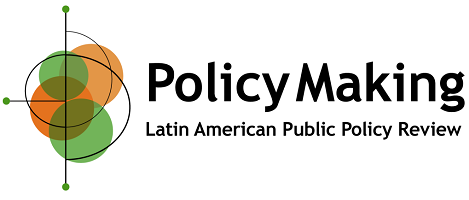Reviewer Guidelines
Introduction
We thank you for your contribution to the quality and integrity of our journal’s publication process. Your work as a reviewer is essential to ensuring that only robust and well-grounded research is published.
This guide aims to provide clear and concise directions for preparing constructive, high-quality reviews.
All submissions undergo a two-stage evaluation process:
Stage 1 – Editorial Committee Review: The Editorial Committee conducts an initial assessment to determine the manuscript’s alignment with the journal’s scope and its compliance with the required standards of quality and rigor.
Stage 2 – Double-Blind Peer Review: Manuscripts deemed suitable proceed to a double-blind peer review, in which reviewers provide comments and recommendations for revisions and improvements. This process continues until a final decision is reached regarding publication. Only manuscripts that demonstrate solid methodological rigor and publication potential are forwarded to anonymous reviewers.
Conflict of Interest Statement
By accepting the invitation to review a manuscript, please ensure that you have no conflicts of interest. These include, but are not limited to:
- Having a personal relationship (friendship or hostility) with the authors;
- Working at the same institution as the authors or within a research group that directly competes with them;
- Having a direct or indirect financial interest in the outcomes of the research.
If any potential conflict exists, you must immediately notify the editors and decline the review. The integrity of the peer review process depends on your transparency and honesty.
Use of Generative Artificial Intelligence Tools
The use of Generative Artificial Intelligence tools must comply with the provisions outlined in Policy Making’s Editorial Policy and must also adhere to the following guidelines:
- Reviewers must not upload manuscripts or any of their parts into generative AI tools to produce automated reviews or analyses, in order to protect the confidentiality and intellectual property of the authors;
- Editors may use AI tools solely for technical purposes—such as style checking, preliminary plagiarism detection, or verification of formal compliance—provided that all use occurs under full human supervision and that AI tools are never employed to assess scientific merit;
- If undeclared or inappropriate use of AI tools is detected, the editors may request clarification, reject the manuscript, or apply post-publication corrections as necessary.
Manuscript Analysis
Reviews should be conducted in a critical yet fair manner. The goal is not merely to identify shortcomings, but primarily to help authors improve the quality and clarity of their work.
Structure and Content
- Title and Abstract: Do they accurately reflect the content of the manuscript? Is the abstract clear, concise, and informative?
- Introduction: Is the research question clearly defined? Have the authors contextualized the problem, presented the state of the art, and justified the relevance of the study?
- Methodology: Are the methods appropriate to address the research question? Are they described in sufficient detail to allow other researchers to replicate the study?
- Results: Are the results presented clearly and objectively? Are the tables and figures self-explanatory and consistent with the text?
- Discussion: Have the authors correctly interpreted the results? Do they discuss the implications, limitations, and potential directions for future research? Is the discussion consistent with the introduction?
- References: Are the references current and relevant?
Technical and Writing Aspects
- Originality and Relevance: Does the research make a significant and original contribution to the field? Are the results relevant to the scientific community?
- Coherence and Clarity: Is the text well-written, cohesive, and easy to read? Are there any grammatical or typographical errors?
- Ethics: Have the authors followed ethical standards for research involving human or animal subjects, when applicable? Is there any indication of plagiarism or data fabrication?
Review Report Preparation
The review should be divided into two sections: a confidential section for the editor and a report for the authors.
Confidential Section for the Editor
In this section, Editors shall:
- Provide a clear final recommendation: Accept, Accept with Minor Revisions, Accept with Major Revisions, or Reject.
- Justify your recommendation briefly and objectively.
- Discuss any confidential matters that should not be shared with the authors, such as suspicions of plagiarism, serious ethical issues, or concerns about the credibility of the research.
- If you have no confidential comments specifically for the editors, you may simply repeat the review prepared for the authors.
Review Report for the Authors
The review report addressed to the authors should be constructive, professional, and respectful.
Please follow the structure below:
- General Summary: Begin with a paragraph summarizing the main contributions of the manuscript, followed by your primary concerns. This helps authors quickly understand the strengths and weaknesses of their work.
- Major Comments: List the most significant issues that, in your view, need to be addressed. Use clear and specific language, avoiding vague statements. For example, instead of saying “the discussion is weak,” explain “the discussion does not sufficiently connect the study’s findings to the existing literature, which limits the reader’s understanding of the contribution.”
- Minor Comments: List less critical suggestions, such as typographical errors, formatting issues, or sentences requiring greater clarity. You may number these points to facilitate the authors’ response and revision process.
Language Suggestions
- Use a collaborative tone, for example: “I suggest that the authors consider…”, “It would be helpful if the authors could…”, “The results section needs to be clarified.”;
- Avoid disparaging language or personal comments. Do not use phrases such as “this study is useless” or “the authors do not understand the subject.”;
- The focus shall always remain on the manuscript, not on the authors.
Your review is an essential tool for improving research quality and advancing science.
Once again, thank you for your time and dedication to this process.
Reviewer Guidelines
Introduction
We thank you for your contribution to the quality and integrity of our journal’s publication process. Your work as a reviewer is essential to ensuring that only robust and well-grounded research is published.
This guide aims to provide clear and concise directions for preparing constructive, high-quality reviews.
All submissions undergo a two-stage evaluation process:
Stage 1 – Editorial Committee Review
The Editorial Committee conducts an initial assessment to determine the manuscript’s alignment with the journal’s scope and its compliance with the required standards of quality and rigor.
Stage 2 – Double-Blind Peer Review
Manuscripts deemed suitable proceed to a double-blind peer review, in which reviewers provide comments and recommendations for revisions and improvements. This process continues until a final decision is reached regarding publication. Only manuscripts that demonstrate solid methodological rigor and publication potential are forwarded to anonymous reviewers.
Conflict of Interest Statement
By accepting the invitation to review a manuscript, please ensure that you have no conflicts of interest. These include, but are not limited to:
- Having a personal relationship (friendship or hostility) with the authors;
- Working at the same institution as the authors or within a research group that directly competes with them;
- Having a direct or indirect financial interest in the outcomes of the research.
If any potential conflict exists, you must immediately notify the editors and decline the review. The integrity of the peer review process depends on your transparency and honesty.
Use of Generative Artificial Intelligence Tools
The use of Generative Artificial Intelligence tools must comply with the provisions outlined in Policy Making’s Editorial Policy and must also adhere to the following guidelines:
- Reviewers must not upload manuscripts or any of their parts into generative AI tools to produce automated reviews or analyses, in order to protect the confidentiality and intellectual property of the authors;
- Editors may use AI tools solely for technical purposes—such as style checking, preliminary plagiarism detection, or verification of formal compliance—provided that all use occurs under full human supervision and that AI tools are never employed to assess scientific merit;
- If undeclared or inappropriate use of AI tools is detected, the editors may request clarification, reject the manuscript, or apply post-publication corrections as necessary.
Manuscript Analysis
Reviews should be conducted in a critical yet fair manner. The goal is not merely to identify shortcomings, but primarily to help authors improve the quality and clarity of their work.
Structure and Content
- Title and Abstract: Do they accurately reflect the content of the manuscript? Is the abstract clear, concise, and informative?
- Introduction: Is the research question clearly defined? Have the authors contextualized the problem, presented the state of the art, and justified the relevance of the study?
- Methodology: Are the methods appropriate to address the research question? Are they described in sufficient detail to allow other researchers to replicate the study?
- Results: Are the results presented clearly and objectively? Are the tables and figures self-explanatory and consistent with the text?
- Discussion: Have the authors correctly interpreted the results? Do they discuss the implications, limitations, and potential directions for future research? Is the discussion consistent with the introduction?
- References: Are the references current and relevant?
Technical and Writing Aspects
- Originality and Relevance: Does the research make a significant and original contribution to the field? Are the results relevant to the scientific community?
- Coherence and Clarity: Is the text well-written, cohesive, and easy to read? Are there any grammatical or typographical errors?
- Ethics: Have the authors followed ethical standards for research involving human or animal subjects, when applicable? Is there any indication of plagiarism or data fabrication?
Review Report Preparation
The review should be divided into two sections: a confidential section for the editor and a report for the authors.
Confidential Section for the Editor
In this section, you shall:
- Provide a clear final recommendation: Accept, Accept with Minor Revisions, Accept with Major Revisions, or Reject.
- Justify your recommendation briefly and objectively.
- Discuss any confidential matters that should not be shared with the authors, such as suspicions of plagiarism, serious ethical issues, or concerns about the credibility of the research.
- If you have no confidential comments specifically for the editors, you may simply repeat the review prepared for the authors.
Review Report for the Authors
The review report addressed to the authors should be constructive, professional, and respectful.
Please follow the structure below:
- General Summary: Begin with a paragraph summarizing the main contributions of the manuscript, followed by your primary concerns. This helps authors quickly understand the strengths and weaknesses of their work.
- Major Comments: List the most significant issues that, in your view, need to be addressed. Use clear and specific language, avoiding vague statements. For example, instead of saying “the discussion is weak,” explain “the discussion does not sufficiently connect the study’s findings to the existing literature, which limits the reader’s understanding of the contribution.”
- Minor Comments: List less critical suggestions, such as typographical errors, formatting issues, or sentences requiring greater clarity. You may number these points to facilitate the authors’ response and revision process.
Language Suggestions
- Use a collaborative tone, for example: “I suggest that the authors consider…”, “It would be helpful if the authors could…”, “The results section needs to be clarified.”;
- Avoid disparaging language or personal comments. Do not use phrases such as “this study is useless” or “the authors do not understand the subject.”;
- The focus shall always remain on the manuscript, not on the authors.
Your review is an essential tool for improving research quality and advancing science.
Once again, thank you for your time and dedication to this process.


